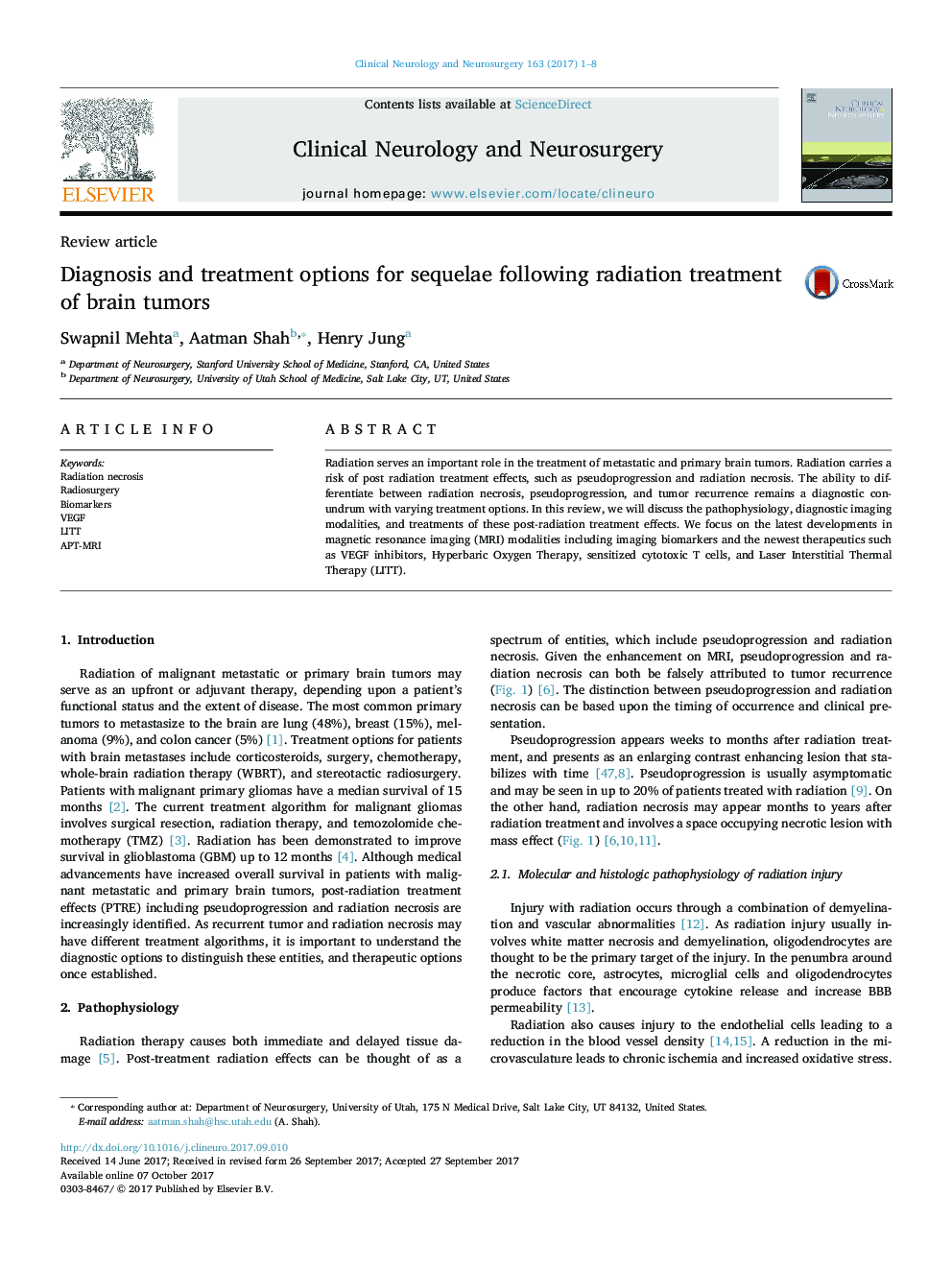| کد مقاله | کد نشریه | سال انتشار | مقاله انگلیسی | نسخه تمام متن |
|---|---|---|---|---|
| 5626991 | 1579659 | 2017 | 8 صفحه PDF | دانلود رایگان |
- Tumor recurrence lesions have a high CBV and correlate with metabolically active regions on FDG-PET.
- In MR spectroscopy, high Cho is seen with tumor recurrence, whereas low Cr is seen in radiation injury.
- APT-MRI signaling is a biomarker which has potential to differentiate between radiation necrosis and recurrence.
- T cell markers may also be useful in differentiating between radiation necrosis and recurrence.
- Corticosteroids, HBOT, VEGF inhibitors, and LITT have therapeutic promise in treating radiation necrosis.
Radiation serves an important role in the treatment of metastatic and primary brain tumors. Radiation carries a risk of post radiation treatment effects, such as pseudoprogression and radiation necrosis. The ability to differentiate between radiation necrosis, pseudoprogression, and tumor recurrence remains a diagnostic conundrum with varying treatment options. In this review, we will discuss the pathophysiology, diagnostic imaging modalities, and treatments of these post-radiation treatment effects. We focus on the latest developments in magnetic resonance imaging (MRI) modalities including imaging biomarkers and the newest therapeutics such as VEGF inhibitors, Hyperbaric Oxygen Therapy, sensitized cytotoxic T cells, and Laser Interstitial Thermal Therapy (LITT).
Journal: Clinical Neurology and Neurosurgery - Volume 163, December 2017, Pages 1-8
